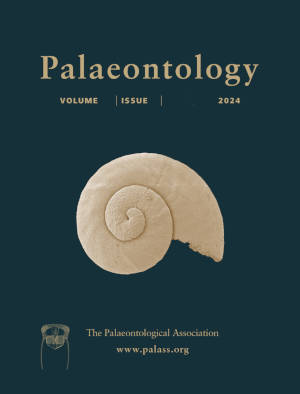Article: Paradox lost: wide gape in the Ordovician brachiopod Rafinesquina explains how unattached filter-feeding strophomenoids thrived on muddy substrates
Publication: Palaeontology
Volume:
67
Part:
2
Publication Date:
2024
Article number:
e12697
Author(s):
Benjamin F. Dattilo, Rebecca L. Freeman, Kyle Hartshorn, David Peterman, Aaron Morse, David L. Meyer, Lindsay G. Dougan, and James W. Hagadorn
Abstract
Abstract Strophomenoid brachiopods had thin, concavo-convex shells, were ubiquitous colonizers of Palaeozoic muddy seafloors, and are hypothesized to have filter-fed in a concave-upward orientation. This orientation would elevate their line of commissure out of potentially lethal lophophore-clogging mud. The paradox is that epibiont distributions on strophomenoids support a convex-upward life position, as do studies of strophomenoid stability and trace fossils formed by strophomenoid sediment-clearing. A premise of the concave-upward orientation hypothesis is a narrow gape, which causes narrow, high velocity inhalant currents, leaving strophomenoids vulnerable to sediment entrainment. Herein we investigate the gape angle of Rafinesquina using serial thin sections and peels, silicified specimens, computer modelling, SEM analysis, x-ray microCT, and 3D printing. Hinge line structure suggests that, conservatively, Rafinesquina could gape 40–45°. Such a gape occurred when diductor muscle contraction could not cause any further rotation, hinge teeth and crenulations were disengaged, and interareas interlocked. In contrast, when closed, hinge teeth were locked in hinge sockets. This wide gape eliminates constraints on feeding orientation. In either convex-up or concave-up orientation, Rafinesquina could feed with slow, diffuse inhalant currents incapable of disturbing sediment, and could snap valves shut to forcefully expel enough water to clear sediment from the mantle cavity, explaining previously described moat-shaped trace fossils associated with shells. Our findings demonstrate that Rafinesquina gaped at an angle approximately equal to the angle between the two interareas when the valves are closed. Our analyses hint that other strophomenoids with similar interarea angles also lived with their shells widely agape.
